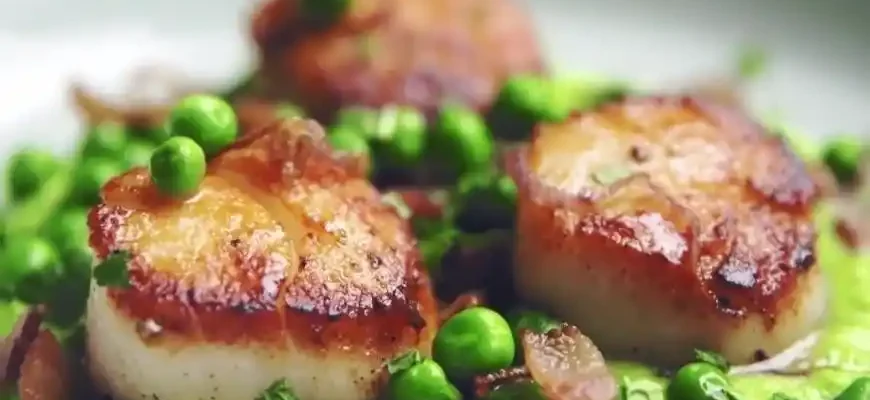Scallops, the delicate, tender shellfish adored by chefs and home cooks alike, can elevate any meal with their sweet, oceanic flavor and buttery texture. But despite their reputation as a high-end restaurant dish, scallops are not as intimidating to cook as many might think. In fact, with the right technique and a few helpful tips, anyone can master the art of preparing scallops at home. Here’s a deep dive into everything you need to know, from selection to cooking methods, including expert advice and some potential pitfalls to watch out for.
What Are Scallops and Why Are They So Special?
Scallops are a type of bivalve mollusk found in both cold and temperate waters around the world. Their edible muscle is tender, slightly sweet, and mild in flavor, making them a favorite for dishes ranging from simple sautés to complex seafood pastas. They come in two primary varieties: bay scallops and sea scallops.
- Bay Scallops: These are smaller and more delicate. They’re typically used in lighter dishes, such as soups, salads, or pasta.
- Sea Scallops: Larger and meatier, these are the showstoppers of the scallop world. They’re perfect for pan-searing or grilling and often served as the main course in a dish.
The key to cooking scallops well lies in understanding their delicate nature. Scallops can easily go from tender to rubbery if overcooked, so timing is crucial.
Selecting the Best Scallops
When it comes to buying scallops, freshness is paramount. Here’s what to look for:
- Appearance: Fresh scallops should be creamy white or slightly pinkish, without any discoloration or dark spots. Avoid scallops that look translucent or have a slimy texture.
- Smell: The fresher the scallop, the less it should smell. Fresh scallops should have a clean, oceanic aroma. If they smell fishy or off, it’s a sign that they’ve started to spoil.
- Type of Scallops: Choose dry-packed scallops whenever possible. These scallops have not been treated with chemicals like sodium tripolyphosphate, which are often used in “wet-packed” scallops to retain moisture. Wet scallops can release excess water while cooking, leading to a less desirable texture.
- Sourcing: Whenever possible, buy scallops from a reputable fishmonger or trusted seafood supplier. Overfishing is a concern with many ocean species, so consider choosing scallops that are sustainably harvested.
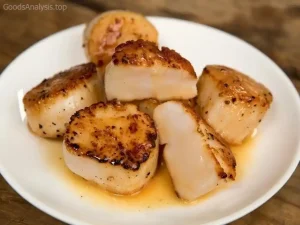
How to Prepare Scallops
Before you cook, you’ll need to prepare your scallops properly:
- Thawing: If you’re using frozen scallops, it’s best to thaw them in the fridge overnight. If you’re short on time, you can thaw them under cold running water for about 30 minutes. Never thaw scallops in warm water, as this can lead to a mushy texture.
- Removing the Side Muscle: When purchasing sea scallops, you’ll often find a small rectangular muscle attached to the side of the scallop. This is tough and chewy and should be removed before cooking. Simply peel it off with your fingers or a knife.
- Pat Dry: Moisture is the enemy of a perfect sear. Pat your scallops dry with paper towels to ensure they cook evenly and develop a nice, golden crust.
Cooking Scallops: Methods and Tips
Scallops cook quickly—usually in just 2 to 3 minutes per side—so don’t stray too far from the pan! Here are the most common methods for cooking scallops at home.
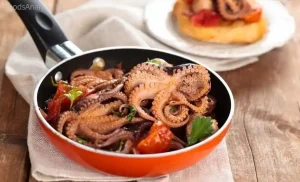
1. Pan-Searing (The Classic Method)
Pan-searing is perhaps the best method to showcase the natural flavor of scallops. Here’s how to do it:
- Heat a Pan: Choose a heavy-bottomed skillet, preferably cast iron, and heat it over medium-high heat. Add a tablespoon of oil with a high smoke point, such as canola or grapeseed oil.
- Searing: Once the oil is shimmering but not smoking, carefully add the scallops, spacing them apart. You should hear a nice sizzle. Resist the urge to move them around. Let them sear for about 2 minutes on one side until they develop a golden-brown crust.
- Flip and Finish: Using tongs, flip each scallop and add a tablespoon of butter and a couple of garlic cloves (optional). As the butter melts, spoon it over the scallops for added flavor. Cook for an additional 1-2 minutes, or until the scallops are opaque but still slightly firm to the touch.
- Rest: Remove the scallops from the pan and let them rest for a minute. This helps them retain their juices and ensures they’re perfectly tender.
2. Grilling
Grilling is another excellent way to cook scallops, especially if you’re looking for a smoky flavor.
- Skewer Them: To prevent the scallops from falling through the grill grates, thread them onto skewers. This will help maintain their shape and make them easier to flip.
- Preheat: Preheat your grill to medium-high heat. Lightly oil the grates to prevent sticking.
- Grill: Place the skewered scallops on the grill and cook for about 2 minutes on each side, turning them carefully with tongs. They should be opaque and have grill marks.
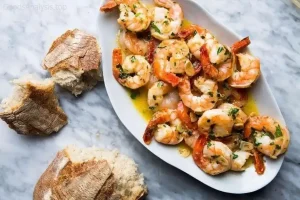
3. Baking
Baking scallops is ideal when you want a low-maintenance cooking method. It’s also great for dishes like scallop gratin or baked scallop casseroles.
- Prep: Arrange the scallops in a buttered baking dish. You can add breadcrumbs, Parmesan cheese, and herbs for added flavor.
- Bake: Preheat the oven to 375°F (190°C) and bake for about 15-20 minutes, or until the scallops are opaque and tender.
Potential Pitfalls and How to Avoid Them
Scallops are relatively easy to cook, but there are a few common mistakes that can lead to disappointing results:
- Overcooking: The number one mistake is overcooking. Scallops should be firm but tender, and they’ll continue to cook slightly after you remove them from the heat. The center should remain slightly translucent. Tip: If in doubt, undercook them slightly. You can always return them to the pan for a few more seconds, but you can’t fix overcooked scallops!
- Not Drying the Scallops: If you don’t pat them dry before cooking, excess moisture will cause them to steam rather than sear, resulting in a soggy texture.
- Crowding the Pan: If you overcrowd your pan, the scallops won’t sear properly and will release too much moisture. Cook in batches if needed.
- Choosing Wet-Pack Scallops: Wet-packed scallops tend to be soaked in a solution that makes them retain more water. They can end up releasing liquid in the pan, which leads to steaming instead of searing.
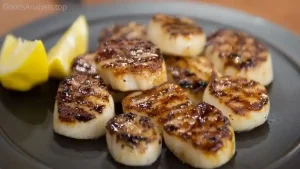
Expert Opinions on Cooking Scallops
Here’s what a few people from around the world have to say about cooking scallops:
- Ava, 33, USA: “I used to be terrified of cooking scallops because I thought they were too fancy for me. Once I learned to keep the heat high and never move them around in the pan, they turned out perfect every time!”
- Carlos, 58, Spain: “I prefer grilling my scallops. The smokiness from the grill adds something special, and it’s so easy—just olive oil and salt. I recommend a squeeze of lemon right before serving.”
- Mei, 42, China: “Scallops in stir-fries are my favorite. I cook them with ginger, garlic, and a bit of soy sauce. Quick and simple, yet bursting with flavor.”
- Olivia, 65, UK: “Baked scallops are my go-to. I make a gratin with cheese and breadcrumbs. It’s a classic recipe, and always a hit at dinner parties.”
- Omar, 50, Egypt: “I don’t trust frozen scallops, but when I buy fresh ones, I make sure to give them just the right amount of time on the stove. They can’t be rushed!”
Final Thoughts
Cooking scallops is a rewarding experience, and while it might take a little practice, the results are well worth the effort. With just a few tips and techniques, you can elevate your meals and impress your friends and family. Remember to keep it simple—don’t overcomplicate things—and always trust your instincts. Whether you prefer them pan-seared, grilled, or baked, scallops offer a wonderful balance of elegance and ease. Enjoy the process, and happy cooking!

